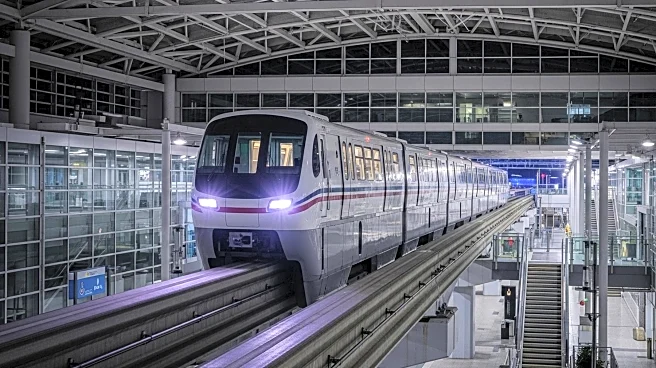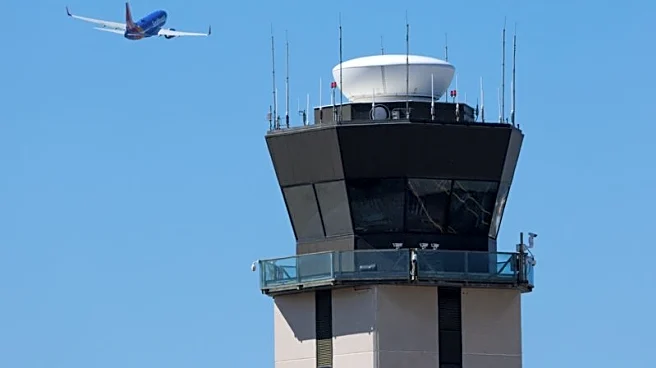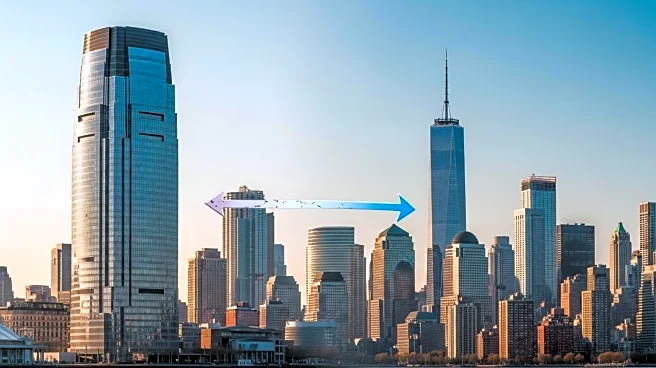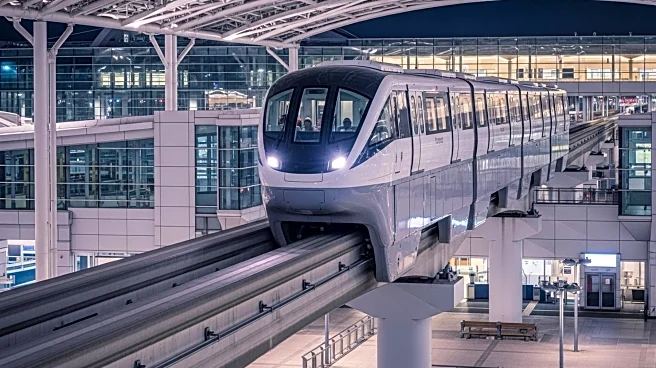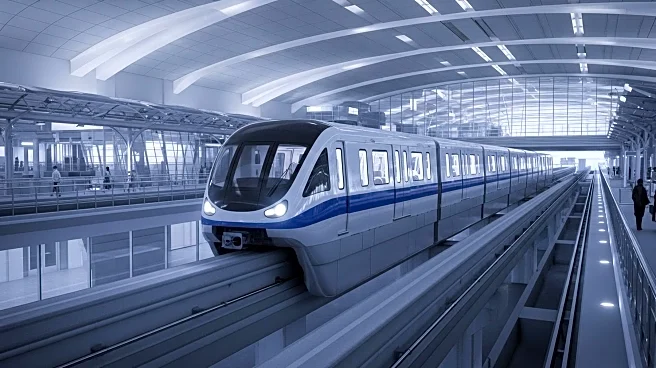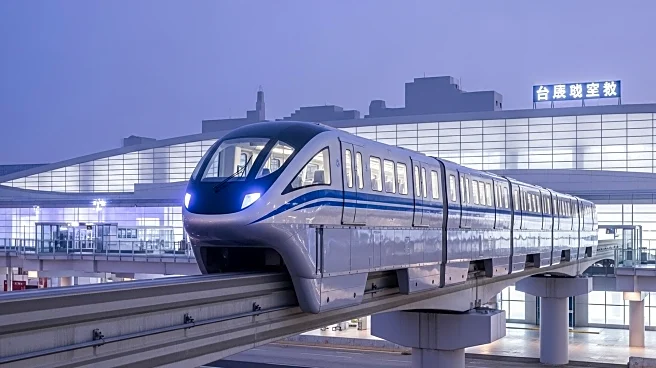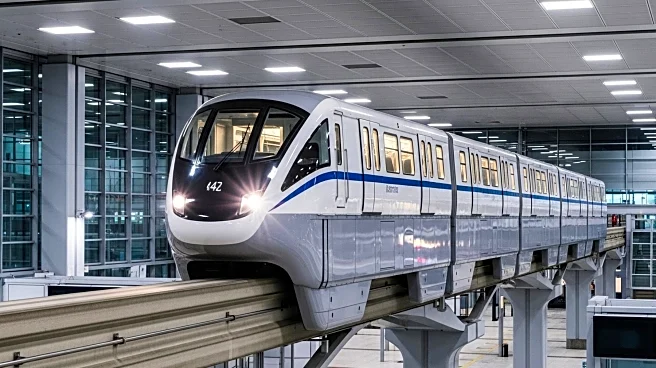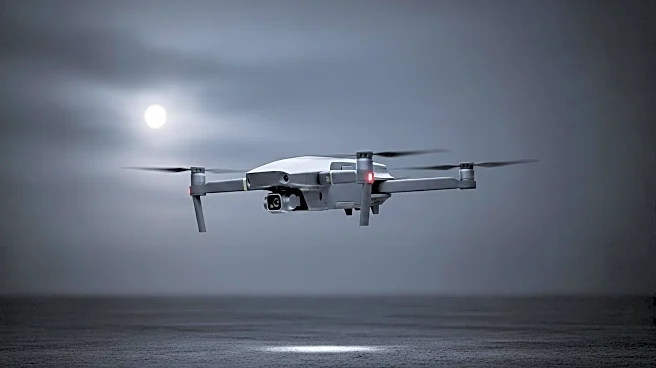What is the story about?
What's Happening?
The Port Authority of New York and New Jersey has commenced the construction of a new AirTrain system at Newark Liberty International Airport, marking a significant step in the EWR Vision Plan. This $3.5 billion project aims to replace the aging AirTrain system, which was originally built in 1996 and is now struggling to accommodate the increasing number of passengers. The new AirTrain will feature seven five-car trains, each capable of carrying 135 to 160 passengers, effectively doubling the current capacity. The project includes the construction of three new stations, a maintenance facility, and improved connectivity to the airport's terminals. The initiative is part of a broader effort to modernize Newark Airport, aligning it with other major airports in the region.
Why It's Important?
The development of the new AirTrain system is crucial for enhancing the efficiency and capacity of Newark Liberty International Airport, which serves as a major gateway for international travelers. As passenger numbers continue to rise, the new system will alleviate congestion and improve the overall travel experience. This project is expected to boost the airport's competitiveness, making it more attractive to airlines and passengers alike. Additionally, the modernization efforts are likely to have positive economic impacts, including job creation during the construction phase and increased tourism and business travel once completed.
What's Next?
The first passenger service for the new AirTrain is anticipated to begin in early 2030. As construction progresses, stakeholders including airlines, local businesses, and government agencies will be closely monitoring the project's impact on airport operations and regional transportation networks. The successful implementation of the AirTrain project could serve as a model for similar infrastructure upgrades at other airports.
Beyond the Headlines
The AirTrain project not only addresses immediate transportation needs but also reflects broader trends in urban planning and sustainable transit solutions. By integrating modern technology and design, the project aims to create a more accessible and environmentally friendly transit system. This aligns with global efforts to reduce carbon footprints and promote public transportation as a viable alternative to car travel.
AI Generated Content
Do you find this article useful?
